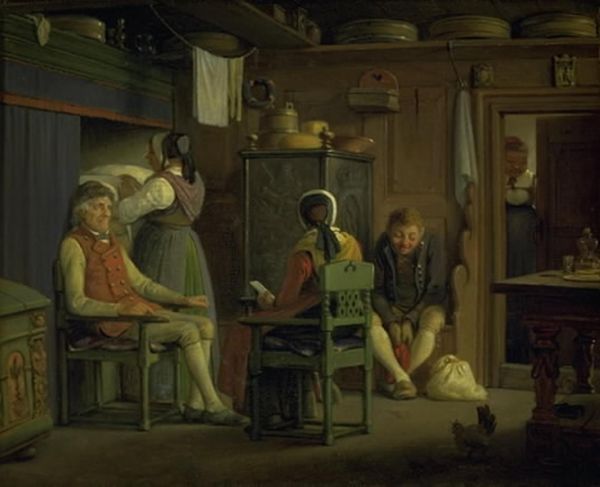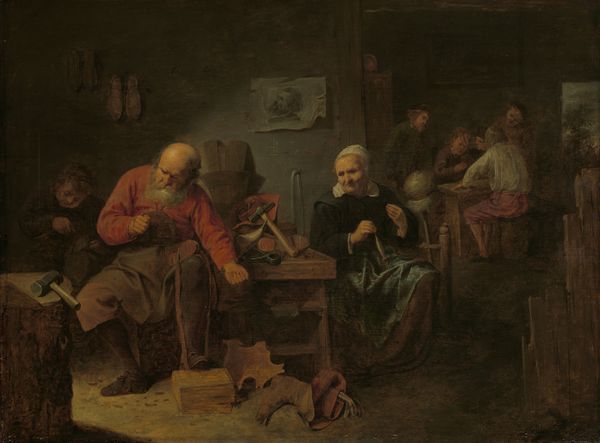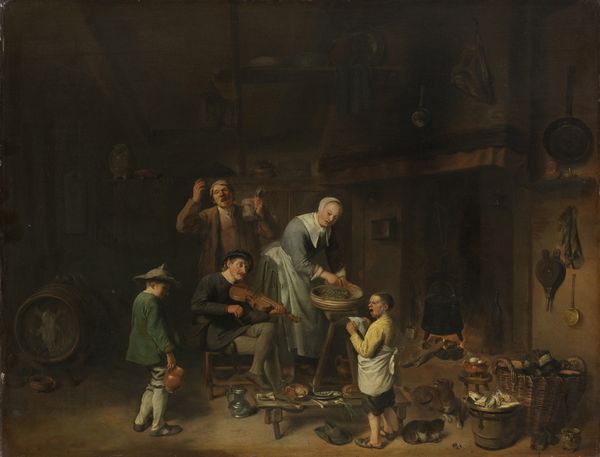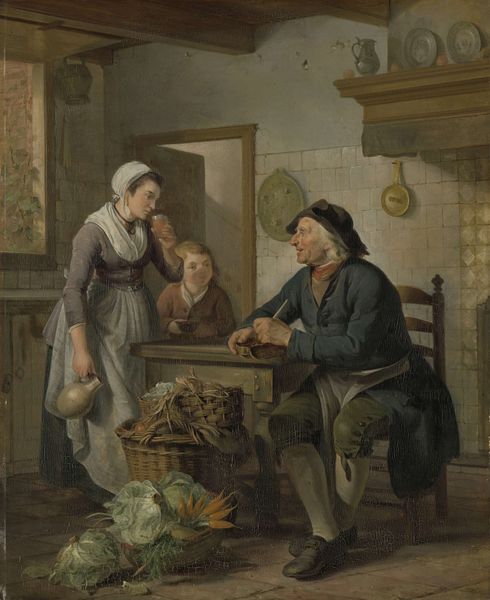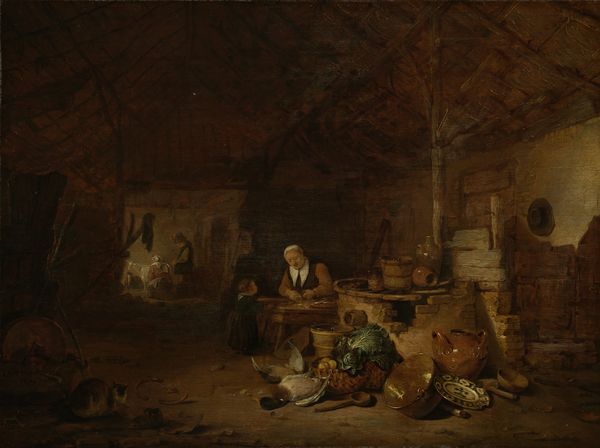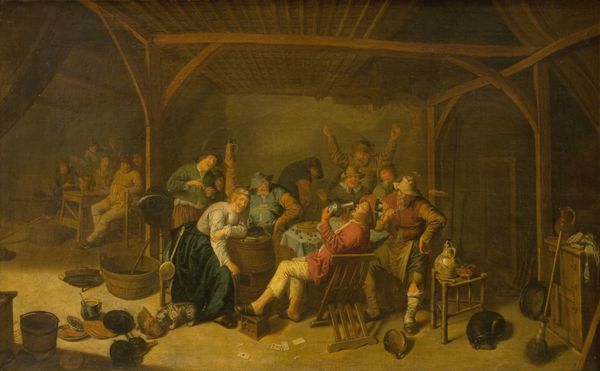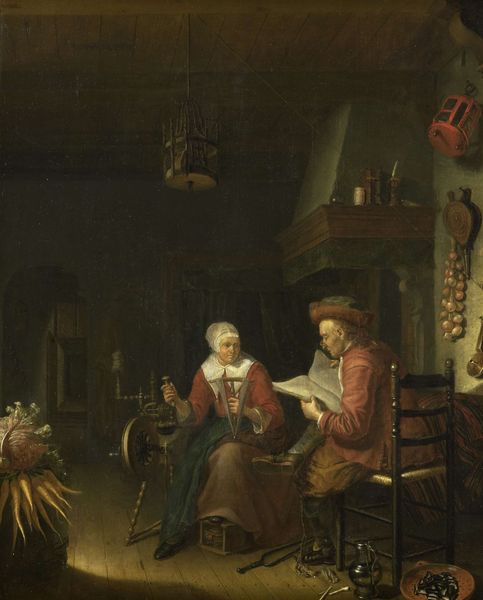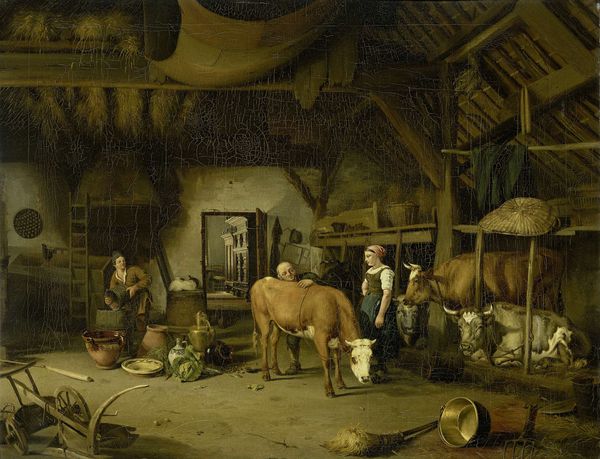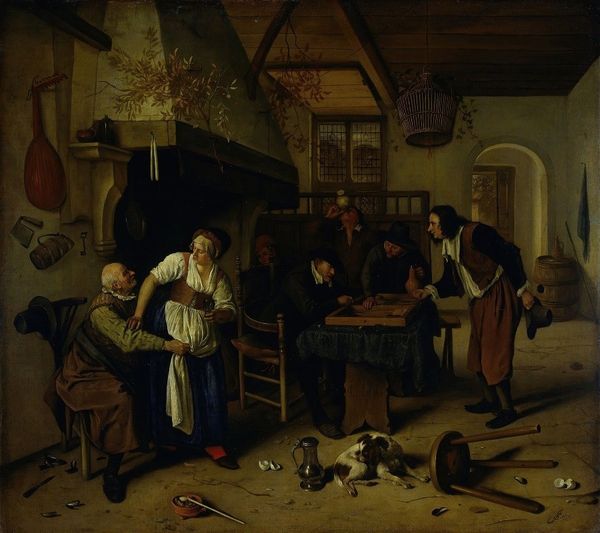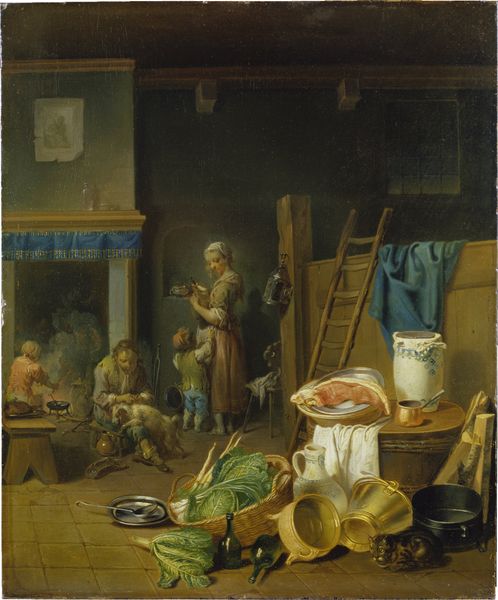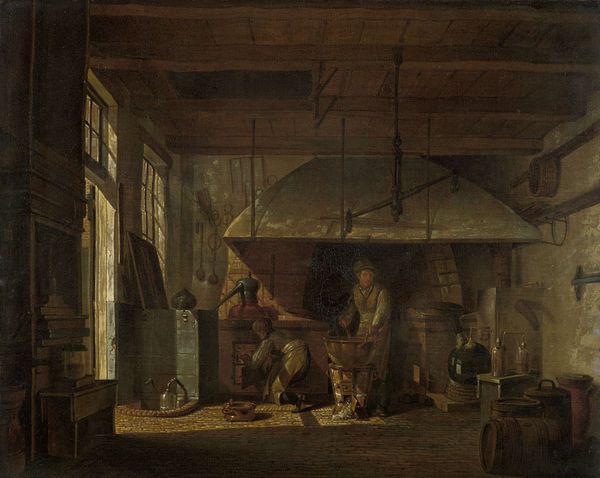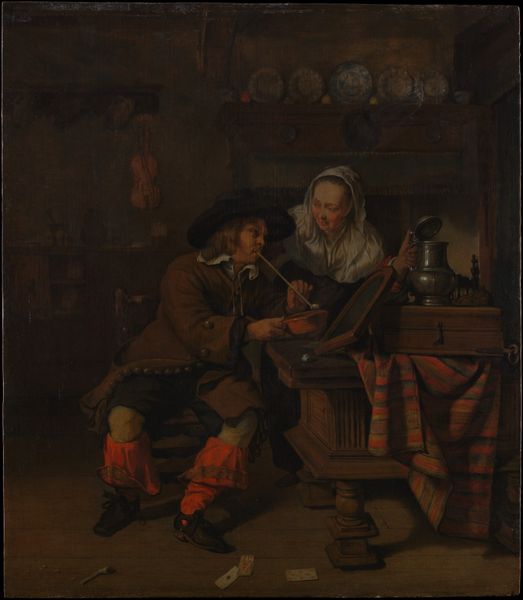
painting, oil-paint
#
portrait
#
narrative-art
#
baroque
#
dutch-golden-age
#
painting
#
oil-paint
#
figuration
#
child
#
cityscape
#
genre-painting
#
brown colour palette
#
realism
Dimensions: height 58 cm, width 49 cm
Copyright: Rijks Museum: Open Domain
Curator: Here we have Willem van Mieris’s “The Raree-show,” created in 1718. It’s an oil on panel piece, currently residing here at the Rijksmuseum. Editor: It’s…dim. There's a close grouping of figures, mostly in browns and greens. Is that a puppet show they’re all crowded around? Curator: Indeed. “Raree-show” refers to a portable peep show, a popular form of entertainment in the 18th century. Think of it as a miniature traveling theater. Mieris was very interested in portraying the daily lives of ordinary people, elevating everyday moments to high art. Editor: But who gets to be “ordinary”? The figures are, without question, white Europeans and they look prosperous…clean. Who's represented and who’s outside of this “everyday” moment is really striking to me. Curator: That’s an important observation. Genre paintings, while seemingly neutral, are very much products of their time and reveal prevailing societal norms and hierarchies. The lack of visible diversity points to who held positions of power and privilege. Editor: Exactly! And considering this form of street theater was consumed and funded largely by wealthy merchants and aristocracy, we must acknowledge art wasn't as inclusive as we pretend it was. This makes me question the intent behind "elevating the ordinary." Who was this elevation really for? Curator: Mieris, as with many Dutch Golden Age painters, catered to the tastes of the wealthy. The intricate details, the illusion of depth… all aimed to impress potential patrons. The way he’s shown the children gazing in amazement highlights the novelty and entertainment value, showing an innocent family moment. Editor: That supposed innocence has conditions, though, doesn’t it? What about people living just outside of this painting’s neat little worldview? This image invites us to enjoy the simplicity of the moment, yet asks us to conveniently forget a lot. Curator: I think situating art like this within its proper socio-economic context really prevents us from taking the easy way out and, by interrogating these images, forces us to grapple with uncomfortable truths. Editor: It sure does. Analyzing "The Raree-show" like this has definitely brought into view some themes I hadn’t considered at first. Thank you!
Comments
rijksmuseum about 2 years ago
⋮
The old Dutch title (in parentheses) refers to the cries ‘beautiful!’ (fraai) and ‘extraordinary!’ (curieus) with which itinerant performers announced themselves. Here a performer shows a wooden triptych with characters from a chivalric romance, while undoubtedly recounting the tale to those gathered around. Willem van Mieris was a ‘fine painter’, meaning that he rendered the scene in a highly detailed and refined manner. The painting is actually also a kind of peepshow.
Join the conversation
Join millions of artists and users on Artera today and experience the ultimate creative platform.
